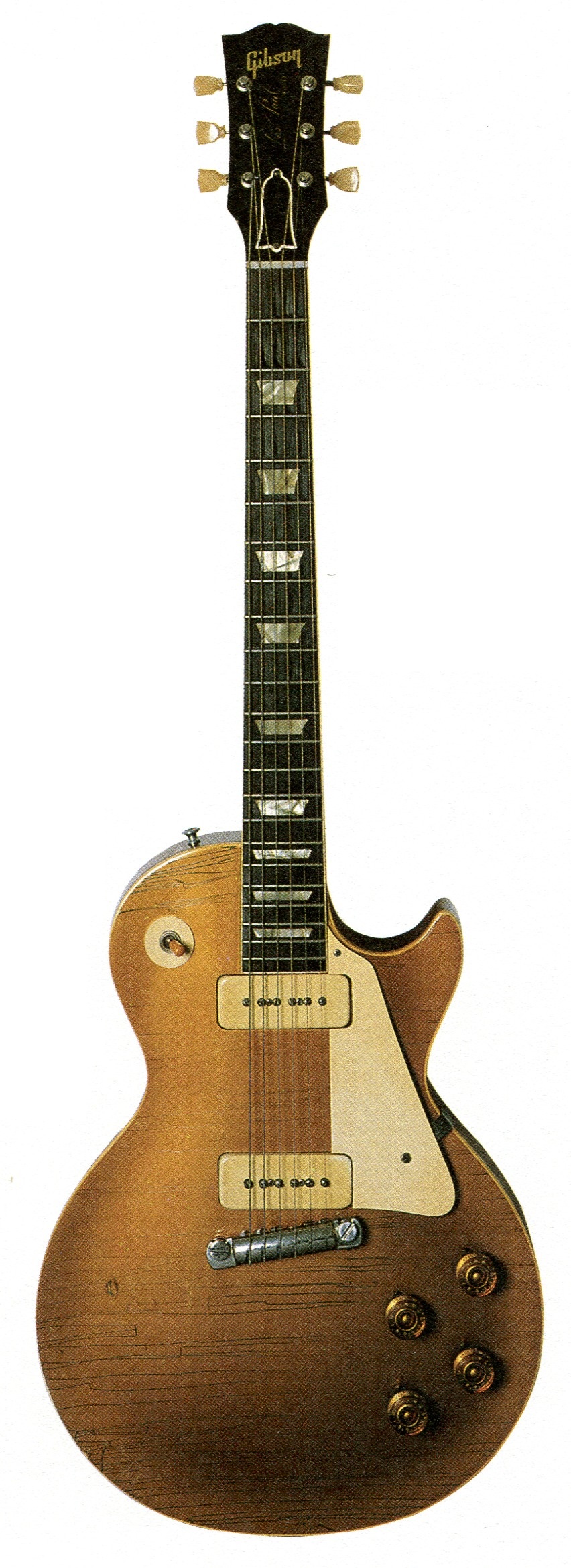Gibson Les Paul (wraparound bridge)

Gibson’s Les Paul Model, as the “goldtop” was officially called, had one shortcoming, and that was it’s bridge. Due to a shallow neck-set angle, the combination bridge/tailpiece was too high, requiring the strings to wrap underneath the crossbar.
It felt awkward to guitarists, and Gibson fixed the problem in late 1953 by increasing the neck angle and introducing a new bidge/tailpiece. The “wraparound” bridge, as it has come to be known, took the strings over the top of the bar, and it was anchored more securely than the Les Paul-designed trapeze, by means of two “studs” screwed into the top of the guitar.
Despite the Les Paul Model’s bridge problem, sales rose in 1953, establishing a strong foundation in the new solidbody market from which Gibson would quickly expand the Les Paul line in both directions.
